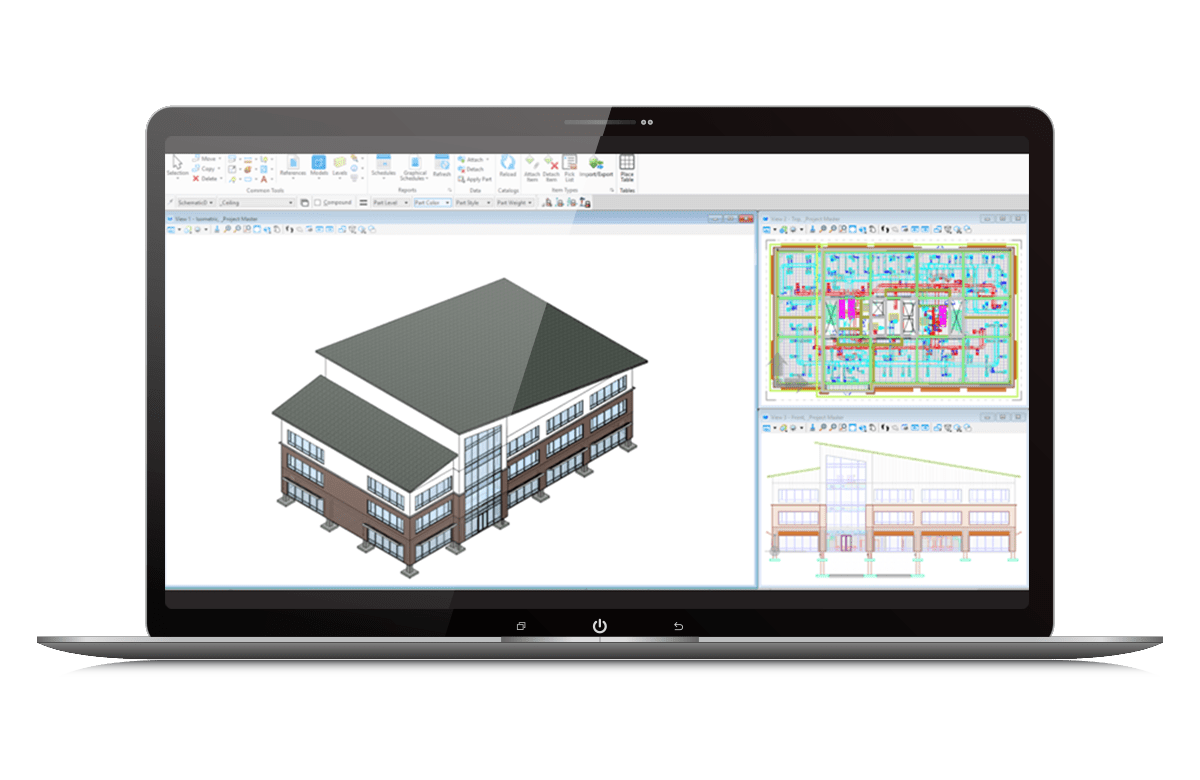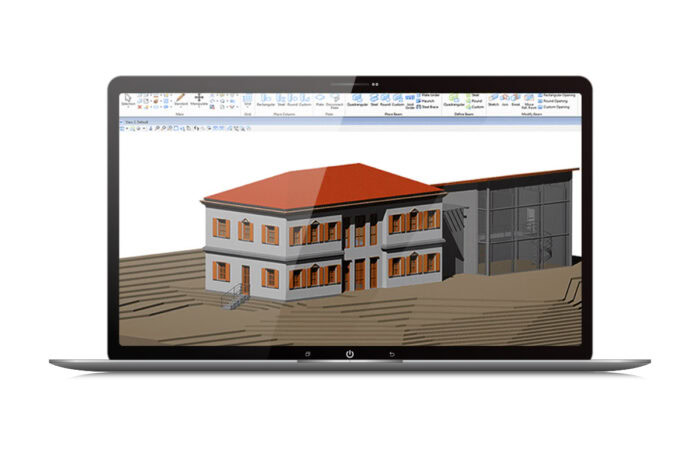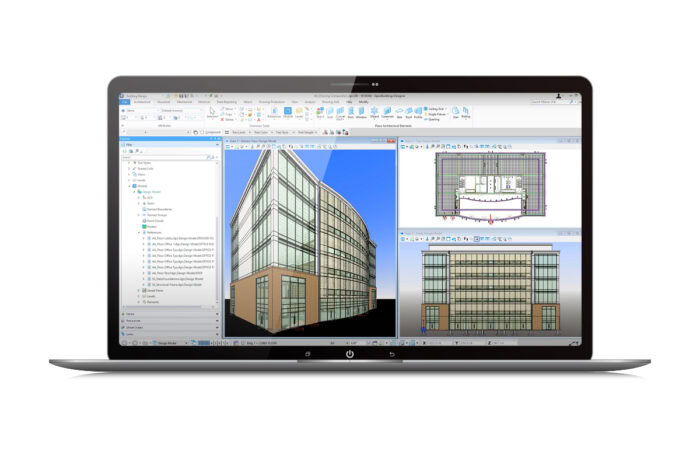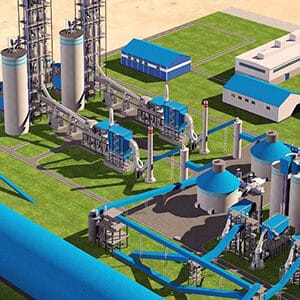Design Safe, Sustainable, and Distinctive Buildings
OpenBuildings Designer
Provides all the capabilities needed to design, visualize, document, and simulate modern, high-performance, and eco-friendly building designs.
OpenBuildings Speedikon, a specialized design and documentation application for the German and European markets, comes included with your OpenBuildings Designer purchase. To access OpenBuildings Speedikon, a quick separate installation is required.
Building WorkSuite
Includes a comprehensive set of powerful building and site design and analysis applications that work seamlessly together in a single, cost-effective license.
*Prices vary per region. For more options, see licensing and subscriptions section.
OpenBuildings Designer Videos
2:01
2:00
- OpenBuildings Designer
-
What is OpenBuildings Designer?
OpenBuildings Designer is a multidiscipline building design application that enables you to use BIM workflows to create information-rich models for designing, analyzing, and simulating buildings and related structures, as well as for producing related documentation.
- Collaborative Design Environment: Enables real-time collaboration for distributed teams using a federated data model that supports simultaneous work, regardless of geographic location.
- Energy Efficiency Analysis: OpenBuildings Energy Simulator is an integrated energy analysis module that assists in evaluating and enhancing energy efficiency, contributing to the development of sustainable infrastructure.
- Generative Design Capabilities: OpenBuildings GenerativeComponents serves as a companion feature for exploring a variety of design options using parametric and associative design techniques.
- Rail Station Design Capability: OpenBuildings Station Designer serves as a companion feature for the efficient and sustainable design of intricate rail stations and transit-oriented infrastructure.
- Advanced Visualization: Facilitates the creation of 3D models, animations, and photo-realistic renderings to enhance the presentation and refinement of designs.
- OpenBuildings Speedikon
-
What Is OpenBuildings Speedikon?
OpenBuildings Speedikon is a powerful design and documentation application for architects and engineers, enabling efficient creation, analysis, and documentation of architectural and industrial building projects. It streamlines design with high-quality representations tailored to various needs, as well as integrates a German dataset optimized for Deutsches Institut für Normung (DIN) and Procurement and Contract Procedure for Building Works or Vergabe- und Vertragsordnung für Bauleistungen (VOB) standards, facilitating seamless standardization and customization.
- High-quality Architectural Design: Create high-quality architectural designs with advanced viewing filter technology, real-time accuracy, German standard compliance, and customizable detail for superior level of detail (LOD)-specific representations.
- Unified Design Environment: Combine drawings, maps, and models for a unified design environment, streamlining design management, visualization, and reporting.
- Tailored Architectural Solutions: Design a wide range of buildings and facilities, such as factories, airports, and hospitals, tailored to Germany’s architectural needs.
- Seamless Workflow Integration: Merge architectural design, structural drafting, and documentation into a seamless workflow, ensuring consistency and coordination across all project stages.
- Building WorkSuite
-
What Is Building WorkSuite?
Building WorkSuite is Bentley’s comprehensive set of building and site design and analysis software. It includes all the applications you need at one low price, making the bundle more affordable for a greater toolset.
Building WorkSuite includes the following interoperable applications:
- OpenBuildings Designer
- OpenBuildings GenerativeComponents
- OpenBuildings Station Designer
- OpenBuildings Speedikon
- ProStructures
- OpenSite Designer
- Bentley LumenRT
- Bentley Descartes
- iTwin Capture Modeler
- OpenBuildings Designer

What is OpenBuildings Designer?
OpenBuildings Designer is a multidiscipline building design application that enables you to use BIM workflows to create information-rich models for designing, analyzing, and simulating buildings and related structures, as well as for producing related documentation.
- Collaborative Design Environment: Enables real-time collaboration for distributed teams using a federated data model that supports simultaneous work, regardless of geographic location.
- Energy Efficiency Analysis: OpenBuildings Energy Simulator is an integrated energy analysis module that assists in evaluating and enhancing energy efficiency, contributing to the development of sustainable infrastructure.
- Generative Design Capabilities: OpenBuildings GenerativeComponents serves as a companion feature for exploring a variety of design options using parametric and associative design techniques.
- Rail Station Design Capability: OpenBuildings Station Designer serves as a companion feature for the efficient and sustainable design of intricate rail stations and transit-oriented infrastructure.
- Advanced Visualization: Facilitates the creation of 3D models, animations, and photo-realistic renderings to enhance the presentation and refinement of designs.
What Is OpenBuildings Speedikon?
OpenBuildings Speedikon is a powerful design and documentation application for architects and engineers, enabling efficient creation, analysis, and documentation of architectural and industrial building projects. It streamlines design with high-quality representations tailored to various needs, as well as integrates a German dataset optimized for Deutsches Institut für Normung (DIN) and Procurement and Contract Procedure for Building Works or Vergabe- und Vertragsordnung für Bauleistungen (VOB) standards, facilitating seamless standardization and customization.
- High-quality Architectural Design: Create high-quality architectural designs with advanced viewing filter technology, real-time accuracy, German standard compliance, and customizable detail for superior level of detail (LOD)-specific representations.
- Unified Design Environment: Combine drawings, maps, and models for a unified design environment, streamlining design management, visualization, and reporting.
- Tailored Architectural Solutions: Design a wide range of buildings and facilities, such as factories, airports, and hospitals, tailored to Germany’s architectural needs.
- Seamless Workflow Integration: Merge architectural design, structural drafting, and documentation into a seamless workflow, ensuring consistency and coordination across all project stages.
What Is Building WorkSuite?
Building WorkSuite is Bentley’s comprehensive set of building and site design and analysis software. It includes all the applications you need at one low price, making the bundle more affordable for a greater toolset.
Building WorkSuite includes the following interoperable applications:
- OpenBuildings Designer
- OpenBuildings GenerativeComponents
- OpenBuildings Station Designer
- OpenBuildings Speedikon
- ProStructures
- OpenSite Designer
- Bentley LumenRT
- Bentley Descartes
- iTwin Capture Modeler
User Quote
“As architects, we spend a disproportionate amount of time trying to represent our solutions rather than designing them. Computational design [using OpenBuildings] has allowed our team to focus on resolving problems and finding better design solutions.”
— Sarah Yap, Computational Design Expert, Johnson Pilton Walker
Featured User Stories
Johnson Pilton Walker
Australia’s Largest Sustainable Commercial Tower
The team used OpenBuildings Designer to optimize digital workflows, saving time and cost.
Voyants Solutions
Industrialize Project Delivery
By implementing Bentley’s interoperable applications, the team achieved a 50% increase in their return on investment.
Citic Heavy Industries
Collaborative BIM Delivers Green, Smart Factory
Bentley’s digital twin applications digitalized asset monitoring and operations management, saving USD 2 million in maintenance.
FAQs
OpenBuildings Designer is multidiscipline Building Information Modeling (BIM) software that streamlines the work among architects and electrical, mechanical, and structural engineers.
The price of OpenBuildings Designer varies per region. While there are various types of licensing available, a common choice is the 12-month practitioner license offered through Bentley’s eStore. When you purchase through the eStore, you get a Virtuoso Subscription. This means you get the software and “Keys” (tokens) to redeem for customizable training, mentoring, and consulting services.
OpenBuildings Speedikon is not available for individual purchase. It is included with the purchase of OpenBuildings Designer.
Processor
Intel® or AMD® processor 1.0 GHz or greater
Memory
16 GB minimum, 32 GB recommended
Hard Disk
24 GB free disk space
Video
512 MB of video RAM or higher is recommended
Screen Resolution
1024 x 768 or higher
For the most up-to-date system requirements, visit Bentley Communities.
Licensing and Subscription options
Choose What is Right for You
One-year license with training
Virtuoso Subscription – A popular choice for small and medium-sized businesses
Get access to software that comes with training – fast! Bentley’s eStore offers a convenient way to lease a 12-month license of Bentley software for a low, upfront cost. Every online purchase comes as a Virtuoso Subscription that includes training and auto-renewals.
With no contract required, it’s easy to get started quickly.
Bentley Systems
One-time purchase with support
Perpetual License with SELECT
A perpetual license of Bentley software is a one-time purchase, with a yearly maintenance subscription, called SELECT. This includes 24/7/365 technical support, learning resources, and the ability to exchange licenses for other software once a year. With SELECT, you will benefit from:
- License pooling, so you can access your software from multiple computers.
- Access additional Bentley software with Term Licenses, which allow you to pay for what you use without the upfront cost of purchasing a perpetual license.
Annual renewal quotes are delivered directly to your inbox, and our experienced Renewal Representatives are available to answer your questions and guide you through any changes you’d like to make.
Bentley Systems
Enterprise Organizations
We’ve got your back
For larger organizations with in-depth requirements, we offer plans to provide global pricing and access to our comprehensive portfolio of solutions and success plan services. Contact us about how to get access to software, global best practices, implementation services, training, and technical support to help your organization realize its full potential while addressing your unique needs.
Bentley Systems





